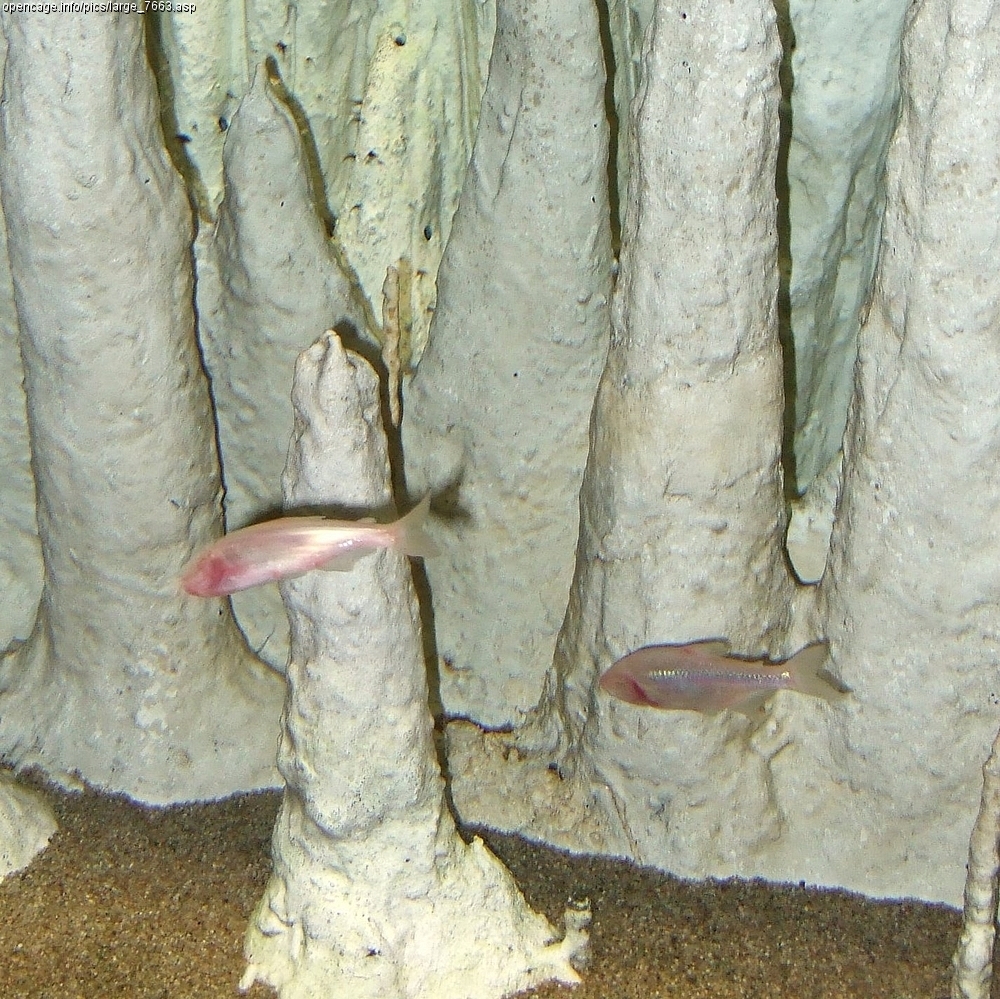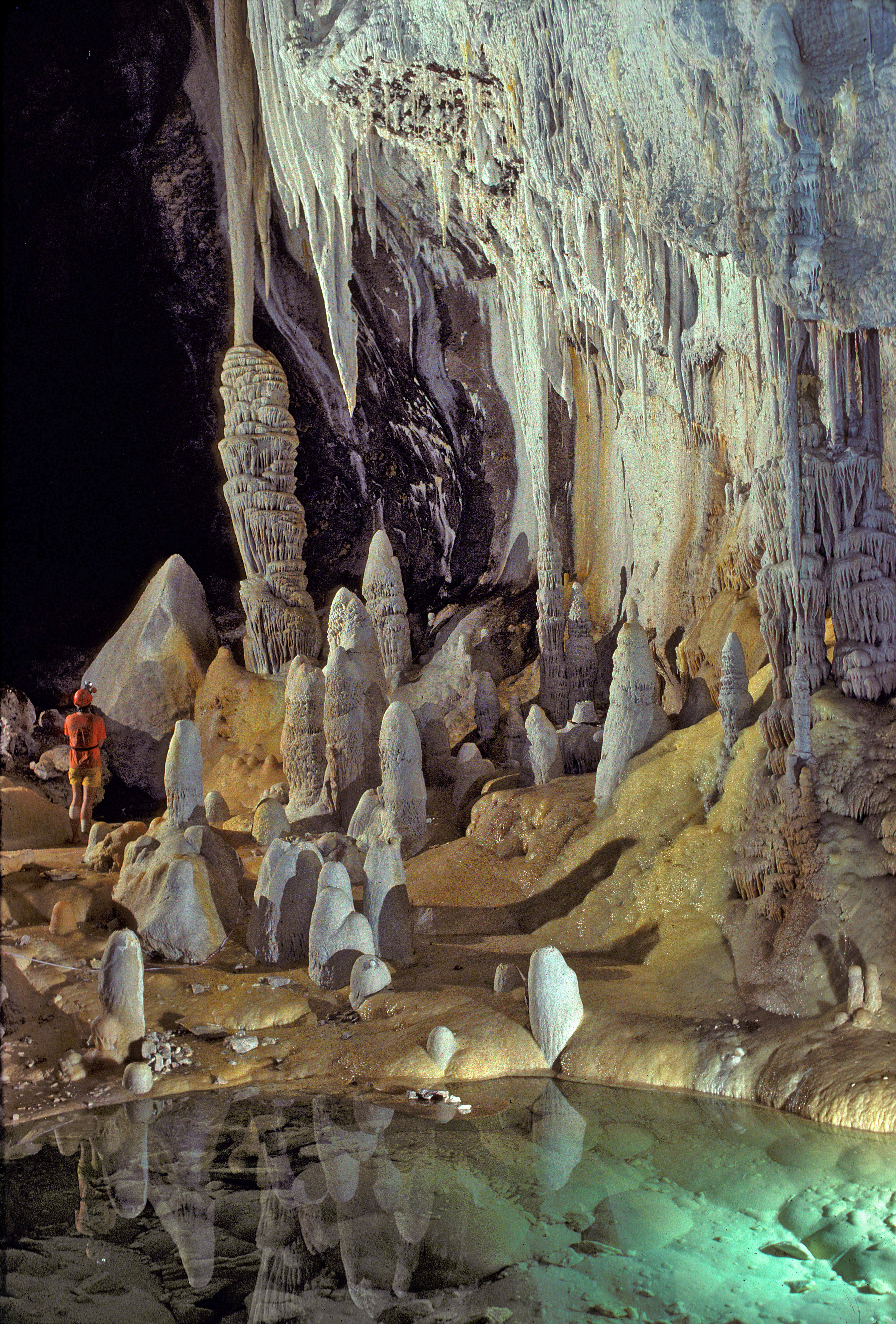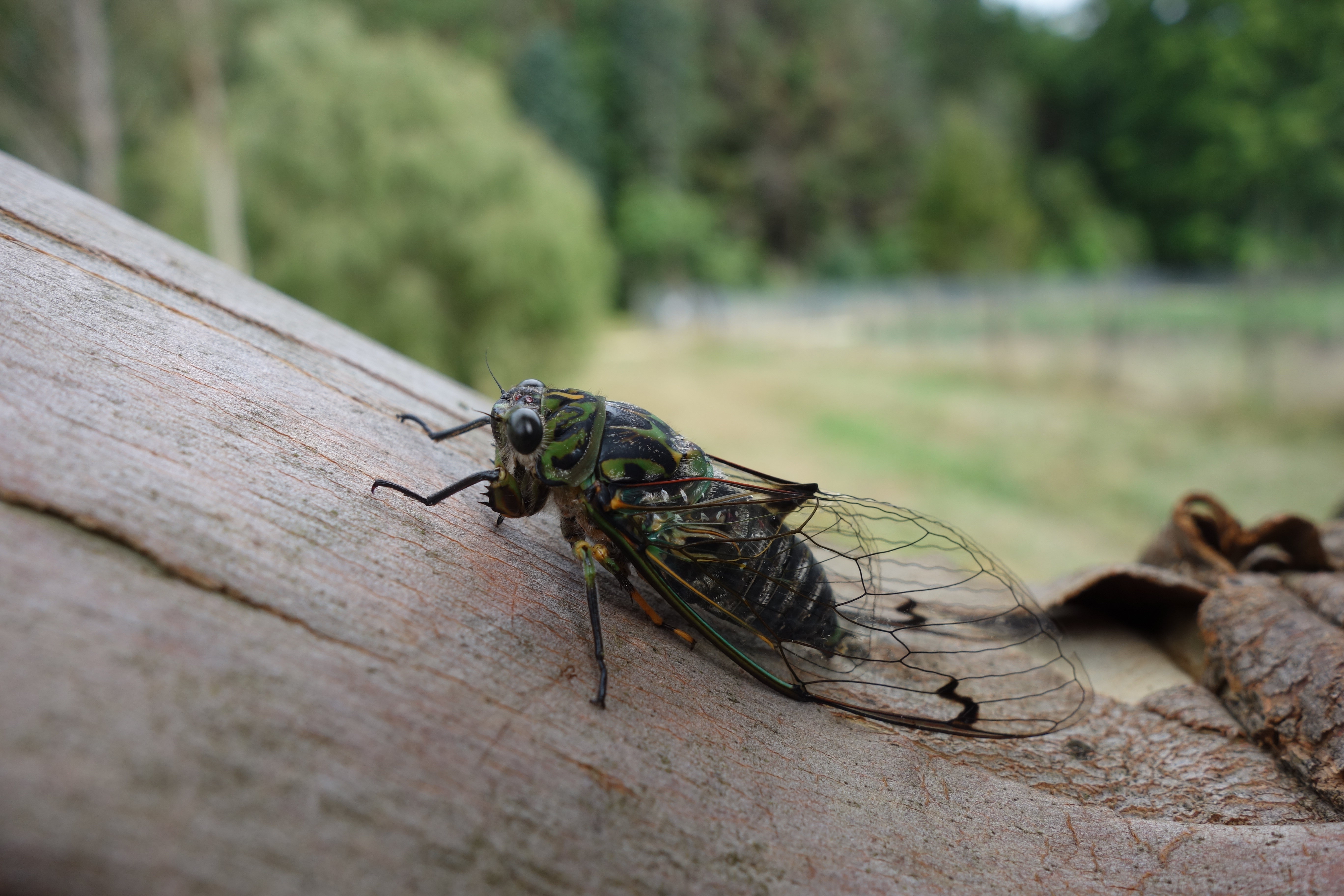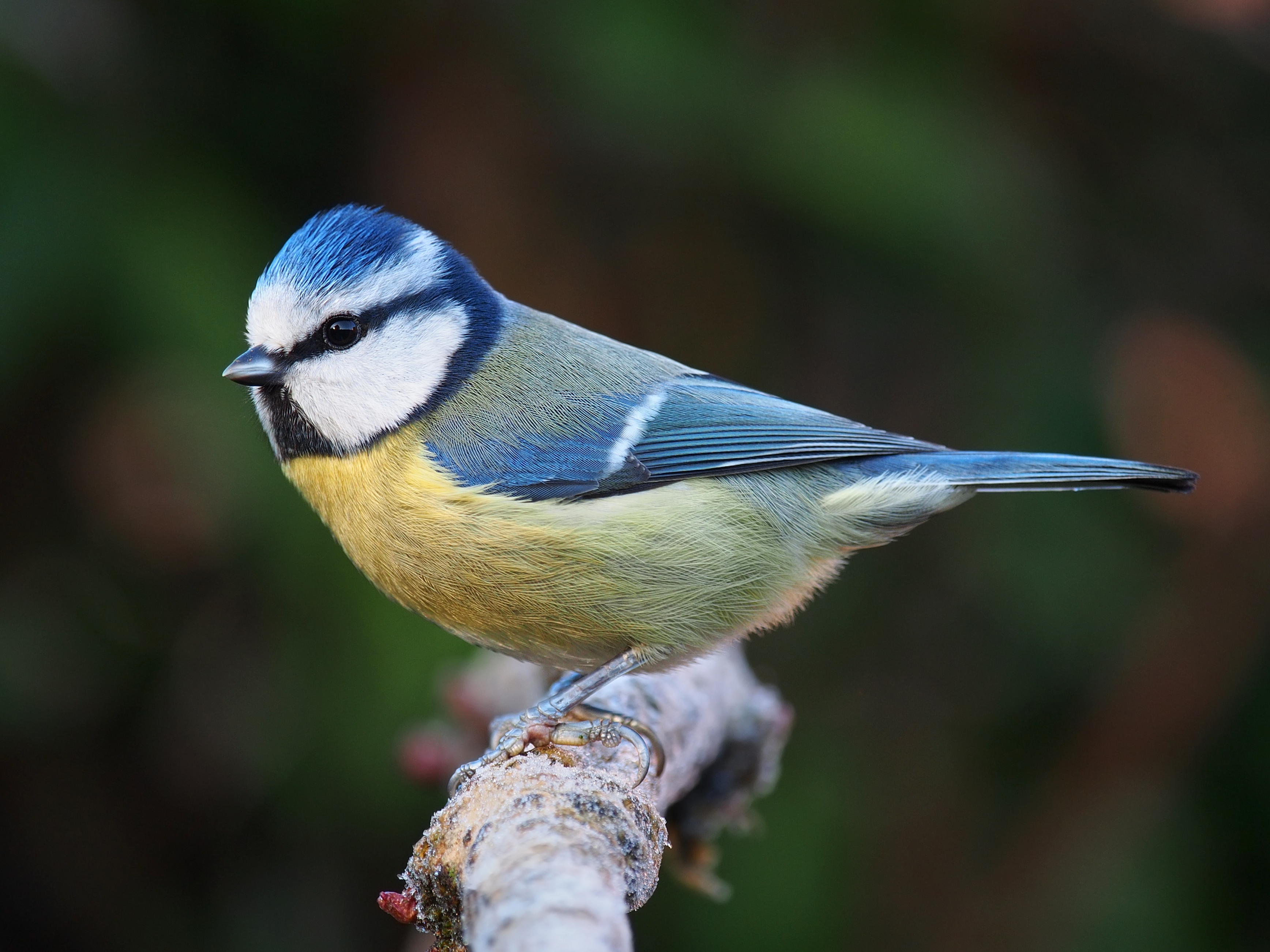|
Troglobite
A troglobite (or, formally, troglobiont) is an animal species, or population of a species, strictly bound to underground habitats, such as caves. These are separate from species that mainly live in above-ground habitats but are also able to live underground (eutroglophiles), and species that are only cave visitors (subtroglophiles and trogloxenes). Land-dwelling troglobites may be referred to as troglofauna, while aquatic species may be called stygofauna, although for these animals the term ''stygobite'' is preferable. Troglobites typically have evolutionary adaptations to cave life. Examples of such adaptations include slow metabolism, reduced energy consumption, better food usage efficiency, decrease or loss of eyesight (anophthalmia), and depigmentation (absence of pigment in the integument). Conversely, as opposed to lost or reduced functions, many species have evolved elongated antenna (biology), antenna and leg, locomotory appendages, in order to better move around and respon ... [...More Info...] [...Related Items...] OR: [Wikipedia] [Google] [Baidu] |
Troglofauna
Troglofauna are small cave-dwelling animals that have adapted to their dark surroundings. Troglofauna and stygofauna are the two types of subterranean fauna (based on life-history). Both are associated with subterranean environments – troglofauna are associated with caves and spaces above the water table and stygofauna with water. Troglofaunal species include spiders, insects, myriapods and others. Some troglofauna live permanently underground and cannot survive outside the cave environment. Troglofauna adaptations and characteristics include a heightened sense of hearing, touch and smell. Loss of under-used senses is apparent in the lack of pigmentation as well as eyesight in most troglofauna. Troglofauna insects may exhibit longer appendages and a lack of wings. Ecological categories Troglofauna are divided into three main categories based on their ecology: * Troglobionts (or troglobites): species, or populations of species, strictly bound to subterranean habitats. * Troglo ... [...More Info...] [...Related Items...] OR: [Wikipedia] [Google] [Baidu] |
Stygofauna
Stygofauna are any fauna that live in groundwater systems or aquifers, such as caves, fissures and vugs. Stygofauna and troglofauna are the two types of subterranean fauna (based on life-history). Both are associated with subterranean environments – stygofauna are associated with water, and troglofauna with caves and spaces above the water table. Stygofauna can live within freshwater aquifers and within the pore spaces of limestone, calcrete or laterite, whilst larger animals can be found in cave waters and wells. Stygofaunal animals, like troglofauna, are divided into three groups based on their life history - stygophiles, stygoxenes, and stygobites. # Stygophiles inhabit both surface and subterranean aquatic environments, but are not necessarily restricted to either. # Stygoxenes are like stygophiles, except they are defined as accidental or occasional presence in subterranean waters. Stygophiles and stygoxenes may live for part of their lives in caves, but don't complete t ... [...More Info...] [...Related Items...] OR: [Wikipedia] [Google] [Baidu] |
Cave
Caves or caverns are natural voids under the Earth's Planetary surface, surface. Caves often form by the weathering of rock and often extend deep underground. Exogene caves are smaller openings that extend a relatively short distance underground (such as rock shelters). Caves which extend further underground than the opening is wide are called endogene caves. Speleology is the science of exploration and study of all aspects of caves and the cave environment. Visiting or exploring caves for recreation may be called Caving, ''caving'', ''potholing'', or ''spelunking''. Formation types The formation and development of caves is known as ''speleogenesis''; it can occur over the course of millions of years. Caves can range widely in size, and are formed by various geological processes. These may involve a combination of chemical processes, erosion by water, tectonic forces, microorganisms, pressure, and atmospheric influences. Isotopic dating techniques can be applied to cave sedime ... [...More Info...] [...Related Items...] OR: [Wikipedia] [Google] [Baidu] |
Endemic
Endemism is the state of a species being found only in a single defined geographic location, such as an island, state, nation, country or other defined zone; organisms that are indigenous to a place are not endemic to it if they are also found elsewhere. For example, the Cape sugarbird is found exclusively in southwestern South Africa and is therefore said to be ''endemic'' to that particular part of the world. An endemic species can also be referred to as an ''endemism'' or, in scientific literature, as an ''endemite''. Similarly, many species found in the Western ghats of India are examples of endemism. Endemism is an important concept in conservation biology for measuring biodiversity in a particular place and evaluating the risk of extinction for species. Endemism is also of interest in evolutionary biology, because it provides clues about how changes in the environment cause species to undergo range shifts (potentially expanding their range into a larger area or bec ... [...More Info...] [...Related Items...] OR: [Wikipedia] [Google] [Baidu] |
Tumbling Creek Cavesnail
The Tumbling Creek cavesnail (''Antrobia culveri'') is a species of freshwater cave snail with gills and an operculum, an aquatic gastropod mollusk in the family Amnicolidae.Bouchet, P. (2014). Antrobia culveri Hubricht, 1971. Accessed through: World Register of Marine Species at http://www.marinespecies.org/aphia.php?p=taxdetails&id=729787 on 2015-02-19 ''Antrobia culveri'' is the only species in the genus ''Antrobia''.Kabat A. R. & Hershler R. (1993). "The prosobranch snail family Hydrobiidae (Gastropoda: Rissooidea): review of classification and supraspecific taxa". '' Smithsonian Contributions to Zoology'' 547: 1-94PDF This is an endangered species. The common name refers to Tumbling Creek Cave, a National Natural Landmark, in Taney County, Missouri, US Taxonomy The Tumbling Creek cavesnail was described as a new species by Leslie Hubricht in 1971, from specimens taken by David Culver, Thomas Aley, and Hubricht in 1969 and 1970. ''Antrobia culveri'' is the type species ... [...More Info...] [...Related Items...] OR: [Wikipedia] [Google] [Baidu] |
Trogloxene
Trogloxenes or subtroglophiles, also called cave guests, are animal species which periodically live in underground habitats such as caves or at the very entrance, but cannot live exclusively in such habitats. Among many scientists, trogloxenes and subtroglophile have slightly different but closely related meanings, with the former covering species that are occasional visitors to underground habitat and the latter species that live more permanently there, but have to go outside (for example, to find food). Both these are in contrast to troglobites, which strictly live in underground habitats. Examples of trogloxene/subtroglophile species are bats, rats, raccoons and some opiliones (this last group also has fully troglobitic species). Several extinct trogloxenes are known like cave bears, cave lions, cave leopards, and cave hyenas. Indications trusted by geologists and archaeologists combine to show that these animals lived there in the latter part, at least, of the third inter ... [...More Info...] [...Related Items...] OR: [Wikipedia] [Google] [Baidu] |
Hausera
''Hausera'' is a subterranean genus of planarian from Brazil. It contains only the single species ''Hausera hauseri''. It is the first cave-dwelling member of the suborder Cavernicola to have been observed in South America. Etymology Both the genus and species were named after Josef Hauser, a researcher of freshwater flatworms. Description Specimens are long and wide. The pharynx is long, and along with the gonopore is located in the hindmost third of the body. While it lacks eyes, the head has a pair of ciliated sensory organs approximately 140 μm back from the body's anterior end. The intestine extends into the brain and connects with the reproductive system via a genito-intestinal duct. The testicular follicles are arranged in uneven rows near the margins of the body, and the ovaries are located behind but in proximity to the brain, approximately 0.6 millimeters behind the body's tip. The species is colorless. Range and habitat ''Hausera hauseri'' was found in ... [...More Info...] [...Related Items...] OR: [Wikipedia] [Google] [Baidu] |
Epigeal
Epigeal, epigean, epigeic and epigeous are biological terms describing an organism's activity above the soil surface. In botany, a seed is described as showing epigeal germination when the cotyledons of the germinating seed expand, throw off the seed shell and become photosynthetic above the ground. The opposite kind, where the cotyledons remain non-photosynthetic, inside the seed shell, and below ground, is hypogeal germination. The terms epigean, epigeic or epigeous are used for organisms that crawl (epigean), creep like a vine (epigeal), or grow (epigeous) on the soil surface: they are also used more generally for animals that neither burrow nor swim nor fly. The opposite terms are hypogean, hypogeic and hypogeous. An epigeal nest is a term used for a termite mound, the above ground nest of a colony of termite Termites are a group of detritivore, detritophagous Eusociality, eusocial cockroaches which consume a variety of Detritus, decaying plant material, generally i ... [...More Info...] [...Related Items...] OR: [Wikipedia] [Google] [Baidu] |
Cave Swallow
The cave swallow (''Petrochelidon fulva'') is a medium-sized, squarish-tailed swallow belonging to the same genus as the more familiar and widespread cliff swallow of North America. The cave swallow, also native to the Americas, nests and roosts primarily in caves and sinkholes. Cave swallows are found in Mexico and the Greater Antilles, with fall and winter vagrants reaching the east and Gulf Coasts of the U.S. Breeding colonies occur in south-eastern New Mexico, Texas, Florida, the Greater Antilles, portions of southern Mexico, and along the west coast of South America. Five subspecies are currently recognized according to '' Birds of North America'', three occurring in North America and two in South America.West, S. (1995). Cave Swallow (Hirundo fulva). In The Birds of North America, No. 141 (A. Poole and F. Gill, eds.). The Academy of Natural Sciences, Philadelphia, and The American Ornithologists' Union, Washington, D.C. Description The cave swallow measures 12 to 14 ... [...More Info...] [...Related Items...] OR: [Wikipedia] [Google] [Baidu] |
Hypogeal
Hypogeal, hypogean, hypogeic and hypogeous (; ) are biological terms describing an organism's activity below the soil surface. In botany, a seed is described as showing hypogeal germination when the cotyledons of the germinating seed remain non-photosynthetic, inside the seed shell, and below ground.{{cite book, author1=Adrian D. Bell, author2=Alan Bryan, title=Plant Form: An Illustrated Guide to Flowering Plant Morphology, url=https://books.google.com/books?id=SM3khPHXhKEC&pg=PA200, year=2008, publisher=Timber Press, isbn=978-0-88192-850-1, page=200 The converse, where the cotyledons expand, throw off the seed shell and become photosynthetic above the ground, is epigeal germination. In water purification works, the hypogeal (or Schmutzdecke) layer is a biological film just below the surface of slow sand filters. It contains microorganisms that remove bacteria and trap contaminant particles. The terms hypogean and hypogeic are used for fossorial (burrowing) and troglobitic ... [...More Info...] [...Related Items...] OR: [Wikipedia] [Google] [Baidu] |
Species
A species () is often defined as the largest group of organisms in which any two individuals of the appropriate sexes or mating types can produce fertile offspring, typically by sexual reproduction. It is the basic unit of Taxonomy (biology), classification and a taxonomic rank of an organism, as well as a unit of biodiversity. Other ways of defining species include their karyotype, DNA sequence, morphology (biology), morphology, behaviour, or ecological niche. In addition, palaeontologists use the concept of the chronospecies since fossil reproduction cannot be examined. The most recent rigorous estimate for the total number of species of eukaryotes is between 8 and 8.7 million. About 14% of these had been described by 2011. All species (except viruses) are given a binomial nomenclature, two-part name, a "binomen". The first part of a binomen is the name of a genus to which the species belongs. The second part is called the specific name (zoology), specific name or the specific ... [...More Info...] [...Related Items...] OR: [Wikipedia] [Google] [Baidu] |






